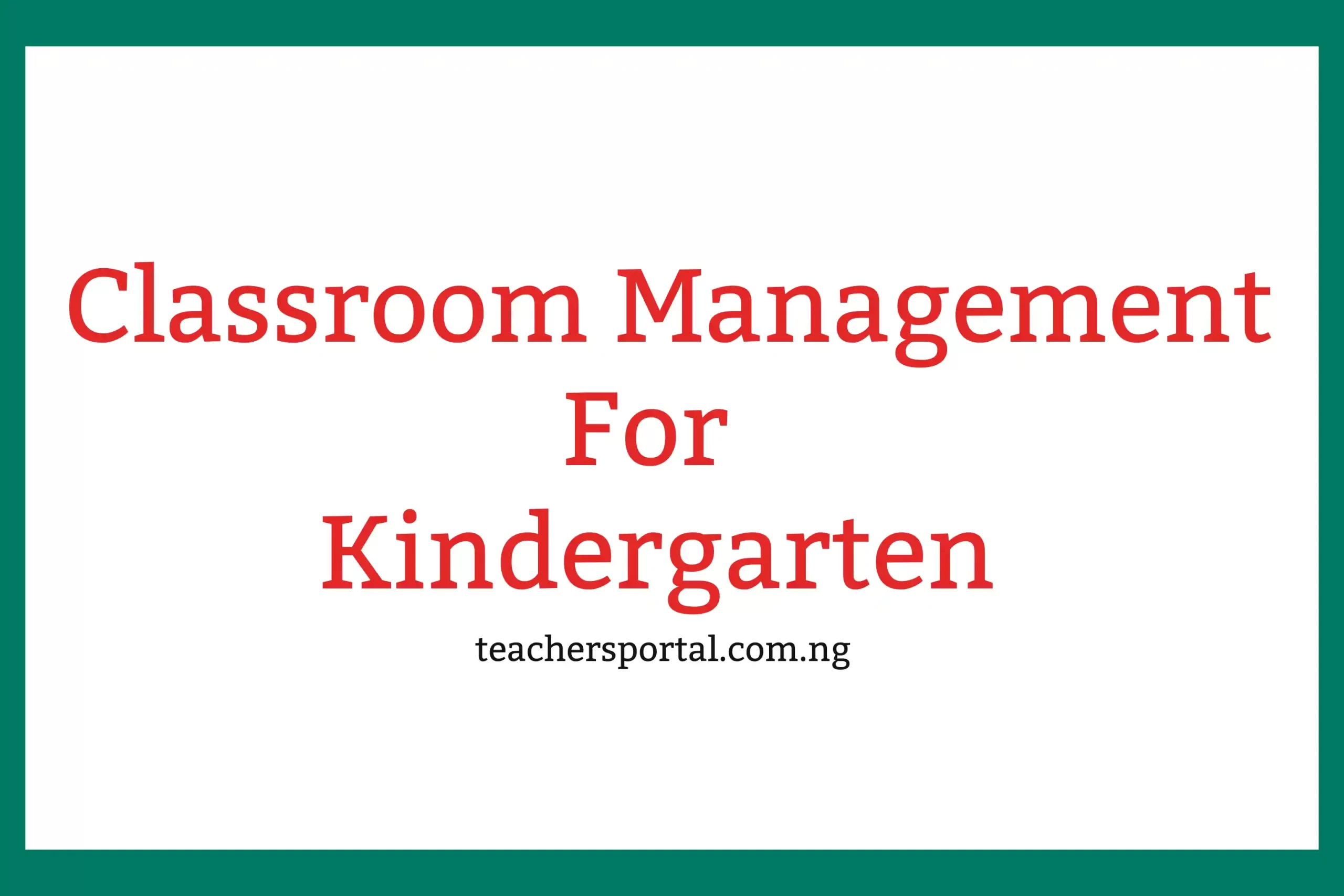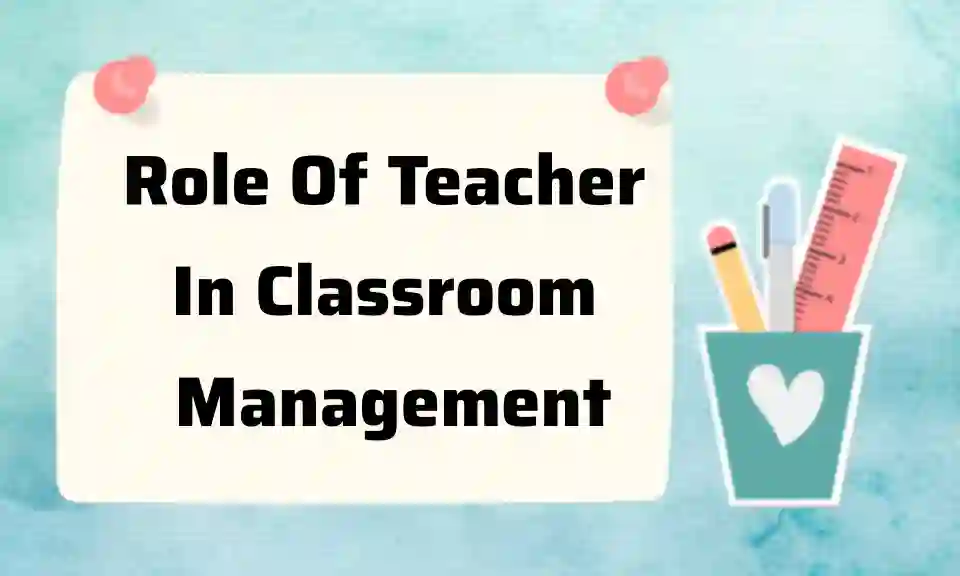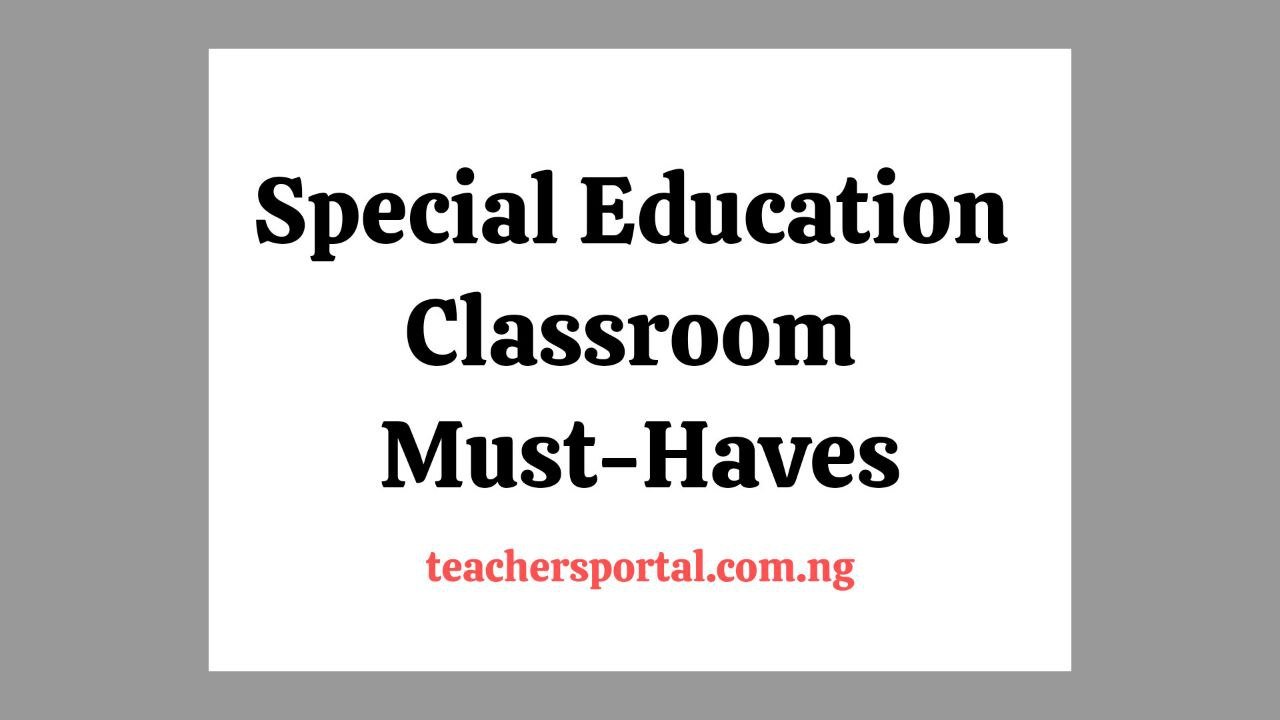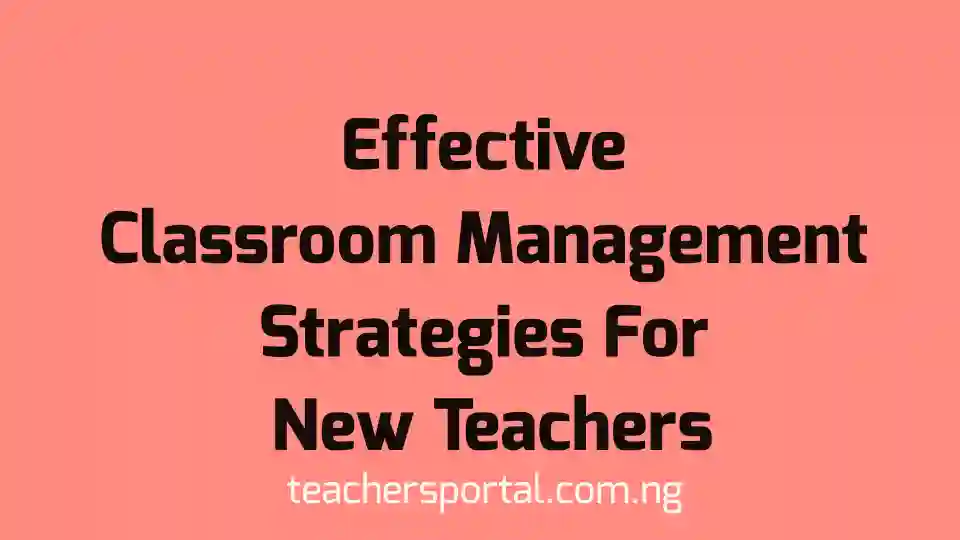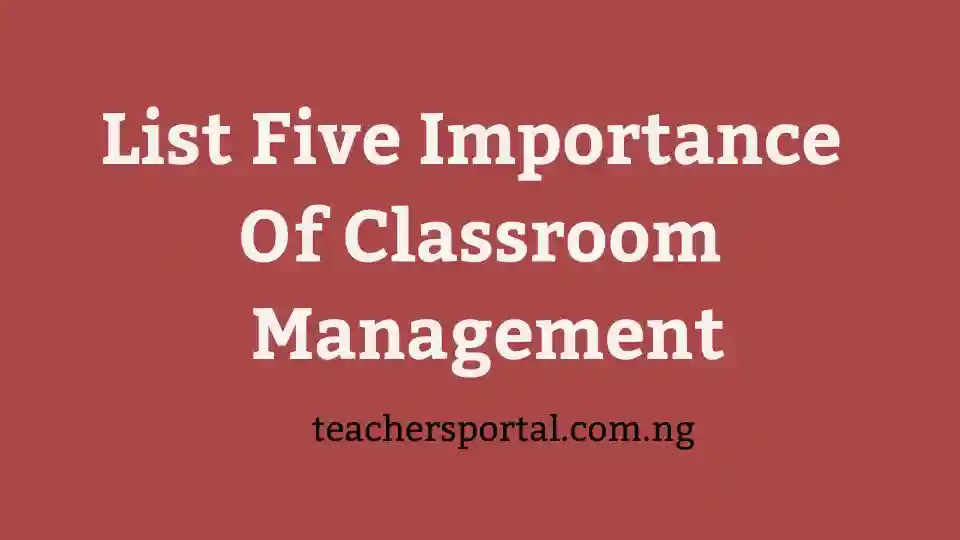Classroom management is a crucial aspect of an elementary teacher’s role in creating a positive and conducive learning environment. Effective classroom management ensures that students feel safe, engaged, and motivated, leading to better academic outcomes. In this article, we will discuss some essential strategies that elementary teachers can employ to establish and maintain effective classroom management.
Establish Clear Expectations
Establishing clear expectations is crucial for effective classroom management. To begin, it is important to set rules and procedures that are appropriate for the age and developmental stage of the students. These guidelines provide a framework for behavior and help create a sense of structure. Clear communication is essential in this process, both verbal and visual. Teachers should explain the expectations explicitly and use visual aids or posters to reinforce them. By ensuring that students understand what is expected of them, it becomes easier to maintain order in the classroom.
Consistency is key when it comes to reinforcing expectations. Teachers should consistently remind students about the rules and procedures and address any deviations promptly. By doing so, students understand that the expectations are not negotiable and that there are consequences for disregarding them. This consistency helps create a disciplined and organized classroom environment, as students become accustomed to the established routines and understand the boundaries.
Build Positive Relationships
As an elementary teacher, building positive relationships with your students is crucial for effective classroom management. Taking the time to get to know each student individually helps create a sense of belonging and establishes trust. Show genuine interest in their lives by engaging in conversations, asking about their interests, and listening attentively. This helps students feel seen and valued, which in turn fosters a positive classroom environment.
Creating a supportive classroom community is another important aspect. Encourage open communication among students where they feel comfortable expressing their thoughts and ideas. Teach and model active listening skills, emphasizing the importance of respecting others’ opinions and perspectives. By promoting a culture of respect and understanding, students learn to collaborate, empathize, and resolve conflicts peacefully. This sense of community encourages students to support one another, reducing disruptions and enhancing the overall learning experience.
When students feel connected and valued, they are more likely to follow rules and cooperate. Building positive relationships cultivates a sense of mutual respect between the teacher and students, fostering an environment where discipline and guidance can be effectively implemented. Students are more receptive to classroom expectations when they have a positive rapport with their teacher, which ultimately leads to better behavior and engagement in the learning process.
Use Reinforcement and Rewards
In the context of classroom management, using reinforcement and rewards is an effective strategy to motivate students and shape their behavior. Positive reinforcement involves recognizing and acknowledging students for their efforts, achievements, and good behavior. This can be done through various means, such as verbal praise, written certificates, small tokens, or implementing a class reward system.
By actively seeking out and praising positive behavior, teachers create a positive classroom culture. When students receive recognition for their efforts, they feel valued and encouraged to continue making responsible choices. This positive reinforcement reinforces the desired behavior and helps students develop a sense of self-efficacy and intrinsic motivation.
Implementing a class reward system can also be beneficial. This could involve a point-based system where students earn points for meeting expectations, demonstrating positive behavior, or achieving academic goals. These points can be accumulated and exchanged for rewards or privileges, such as extra free time, a special activity, or a small prize. The reward system provides an incentive for students to engage in positive behaviors and creates a sense of excitement and achievement.
Maintain Consistency
For elementary teachers, maintaining consistency is a fundamental aspect of effective classroom management. Consistency involves enforcing rules, consequences, and routines consistently and fairly throughout the classroom. When students know what to expect and can predict the outcomes of their actions, they feel secure and are more likely to follow the established guidelines.
Enforce rules consistently by applying them to all students equally. Avoid showing favoritism or making exceptions based on personal biases. When students perceive fairness in the classroom, they develop trust in the teacher and the rules, which contributes to a more positive and harmonious learning environment.
Consistency also extends to consequences for behavior. Clearly communicate the consequences for both positive and negative behaviors and apply them consistently. This helps students understand the direct relationship between their actions and the outcomes, reinforcing a sense of accountability. When consequences are consistently enforced, students are more likely to make responsible choices and modify their behavior accordingly.
Maintaining consistency in daily routines is equally important. Establish clear expectations for transitions, procedures, and classroom management strategies, and ensure they are consistently implemented. Consistent routines provide structure and help students feel secure, allowing them to focus on their learning without unnecessary disruptions.
Utilize Proactive Strategies
Utilizing proactive strategies is a crucial component of effective classroom management for elementary teachers. By implementing these strategies, teachers can prevent behavior problems before they arise, creating a positive and productive learning environment. Proactive strategies involve planning and structuring lessons in a clear and organized manner.
One key proactive strategy is to design lessons that are engaging and interactive. Incorporate activities and materials that capture students’ attention and make learning enjoyable. By keeping students actively engaged, they are less likely to become bored or disinterested, reducing the chances of disruptive behavior.
Another proactive strategy is to provide hands-on learning experiences. This approach allows students to actively participate in their learning, promoting better understanding and retention of information. Hands-on activities encourage exploration, critical thinking, and problem-solving skills, which contribute to a more focused and involved classroom environment.
Differentiating instruction is also important for proactive classroom management. Recognize and address the diverse needs of your students by providing varied levels of challenge and support. By differentiating instruction, you ensure that each student is appropriately challenged and engaged, reducing the likelihood of disruptive behaviors arising from boredom or frustration.
Foster a Positive Learning Environment
Fostering a positive learning environment is crucial for elementary teachers, as it sets the foundation for student engagement and academic success. One way to achieve this is by arranging the physical space in a manner that supports collaboration, organization, and student interaction. Consider creating flexible seating arrangements, designated learning areas, and accessible materials to promote a sense of ownership and inclusivity within the classroom. A well-organized and visually appealing environment can positively impact students’ motivation and overall learning experience.
Displaying student work, motivational quotes, and visual aids throughout the classroom further enhances the positive learning environment. Showcasing students’ achievements not only recognizes their efforts but also inspires others to strive for success. Motivational quotes can serve as reminders of the importance of effort and resilience, promoting a growth mindset among students. Visual aids, such as educational posters or diagrams, can facilitate learning and provide additional support for students’ understanding of concepts.
Encourage a growth mindset among students by emphasizing the value of effort, perseverance, and learning from mistakes. Celebrate progress and improvement rather than solely focusing on grades or final outcomes. Recognize and praise students’ efforts, highlighting the process of learning and the development of skills and knowledge. By fostering a culture of continuous improvement, students feel empowered to take risks, overcome challenges, and actively engage in their own learning journey.
Effective Communication
Effective communication plays a critical role in classroom management for elementary teachers. It involves conveying expectations, instructions, and feedback in a clear and concise manner that is appropriate for the age and development of the students. Using positive language, active listening, and nonverbal cues can enhance understanding and foster a positive classroom environment.
When communicating expectations, be clear and explicit about the behavior, academic standards, and classroom rules that students are expected to follow. Use language that is appropriate for their age and ensure that they understand what is expected of them. Reinforce these expectations consistently and provide reminders when necessary.
Instructions should also be communicated clearly and in a way that students can easily understand. Break down complex tasks into smaller steps and provide examples of demonstrations as needed. Encourage students to ask questions if they need further clarification and be responsive to their queries.
Effective communication involves active listening as well. Give students your full attention when they are speaking and show genuine interest in what they have to say. Paraphrase or repeat important points to demonstrate understanding and provide appropriate feedback or guidance.
Maintaining open lines of communication with parents or guardians is equally important. Regularly update them on their child’s progress, both academically and behaviorally. Share positive achievements and address any concerns promptly. Building a partnership with parents or guardians creates a support network that enhances classroom management and promotes student success.
Implement Cooperative Learning
Implementing cooperative learning in the classroom is a valuable strategy for elementary teachers. Cooperative learning involves organizing students into small groups to work together on tasks or projects. By incorporating this approach, teachers promote collaboration, peer support, and social interaction among students.
Cooperative learning activities encourage students to actively engage with their peers, share ideas, and work towards a common goal. This collaborative environment nurtures a sense of belonging and encourages students to develop communication and teamwork skills. They learn how to listen to others, express their thoughts, and consider different perspectives, fostering a supportive and inclusive classroom community.
To ensure equal participation within the groups, assigning roles can be beneficial. These roles can rotate within the group or be assigned based on students’ strengths or interests. Roles such as facilitator, recorder, timekeeper, or materials manager help distribute responsibilities and promote teamwork. By assigning roles, every student has the opportunity to contribute and take ownership of their learning.
Cooperative learning activities offer various benefits. Students learn from one another, reinforcing their understanding of concepts and improving problem-solving skills. They also develop important social skills such as effective communication, empathy, and collaboration. Working together in small groups fosters a positive and engaging learning environment that encourages active participation and enhances overall academic achievement.
Incorporate Movement Breaks
Incorporating movement breaks into the daily routine is a beneficial practice for elementary teachers. Elementary students often have abundant energy, and short breaks that involve physical movement can help them refocus, recharge, and maintain engagement in the classroom.
Encourage stretching exercises as a way to promote physical well-being and reduce restlessness. Simple stretching routines can help students release tension, improve blood circulation, and increase their overall comfort and alertness. These breaks can be integrated into transitions between subjects or during longer periods of seated work.
Brain breaks are another effective way to incorporate movement into the classroom. These breaks involve quick and fun activities that engage students’ minds and bodies, helping to refresh their focus. Brain breaks can include energizing games, dance routines, or interactive tasks that require physical movement. These activities not only provide a break from sedentary tasks but also stimulate creativity, encourage social interaction, and enhance overall cognitive function.
In addition to structured stretching exercises and brain breaks, quick physical activities can be implemented as well. These activities can be as simple as a few minutes of jumping jacks, jogging in place, or dancing to a lively song. The goal is to get students moving and actively engaged, which can help release excess energy and improve their ability to concentrate.
Use Visual Aids
Using visual aids is a powerful strategy for elementary teachers to enhance instruction and support student learning. Visual aids include a variety of visual materials such as charts, posters, diagrams, graphic organizers, and images that help clarify instructions, reinforce concepts, and provide visual references for students.
Visual aids are particularly useful for clarifying complex instructions or conveying information in a more visual and tangible way. By using charts or diagrams, teachers can break down complex concepts into simpler, more easily digestible parts. This visual representation helps students grasp the content more effectively and supports their understanding of abstract or challenging ideas.
Displaying visual reminders of classroom expectations and rules is another valuable application of visual aids. Having visual cues readily available helps students remember and follow the established guidelines. For example, displaying a chart outlining expected behavior or a poster showcasing specific classroom procedures can serve as constant visual references, promoting consistency and a shared understanding of expectations.
Visual aids also cater to visual learners, who benefit from seeing information presented visually. Visual learners thrive when they can see concepts and information in a clear and organized manner. Visual aids help engage these learners and make the content more accessible and memorable for them.
By implementing these additional strategies, elementary teachers can further refine their classroom management skills and create a nurturing and engaging learning environment for their students. Remember, effective classroom management is an ongoing process that requires patience, adaptability, and a commitment to the growth and success of every student.

